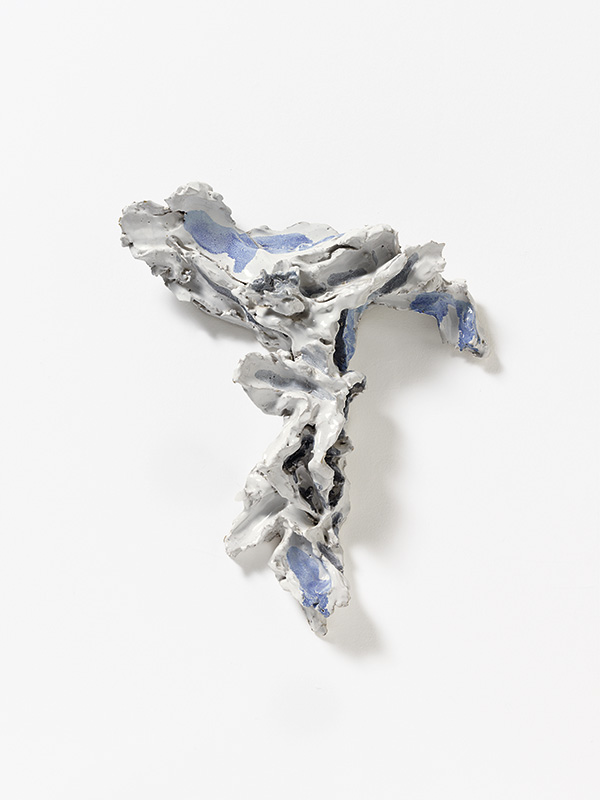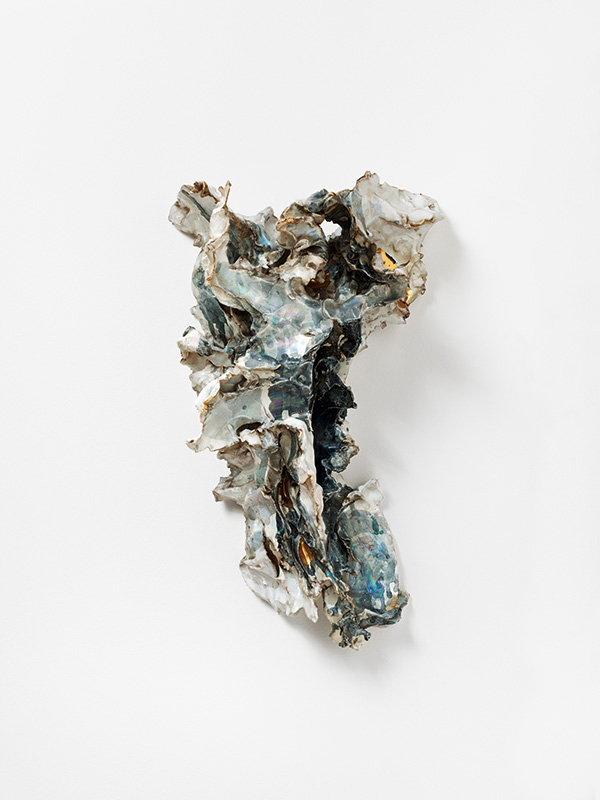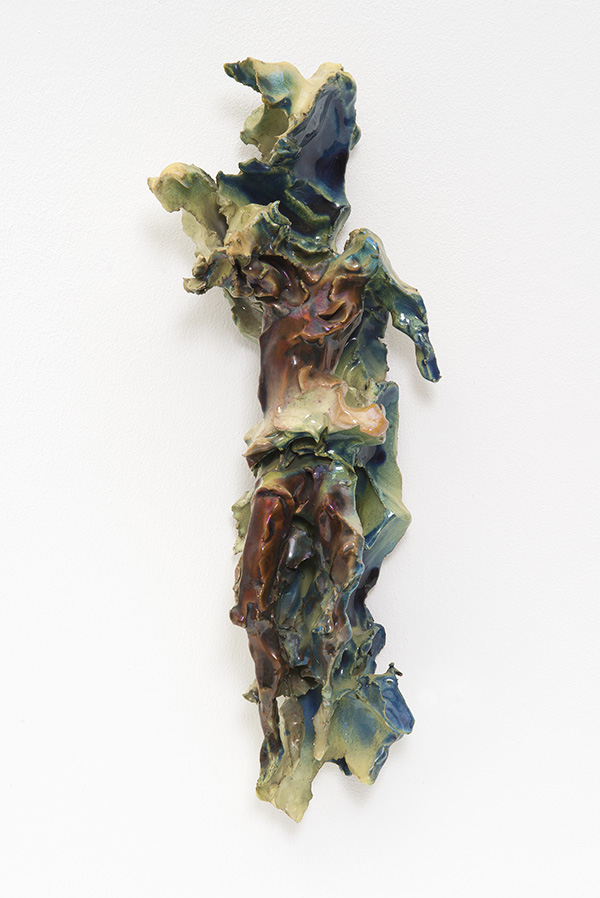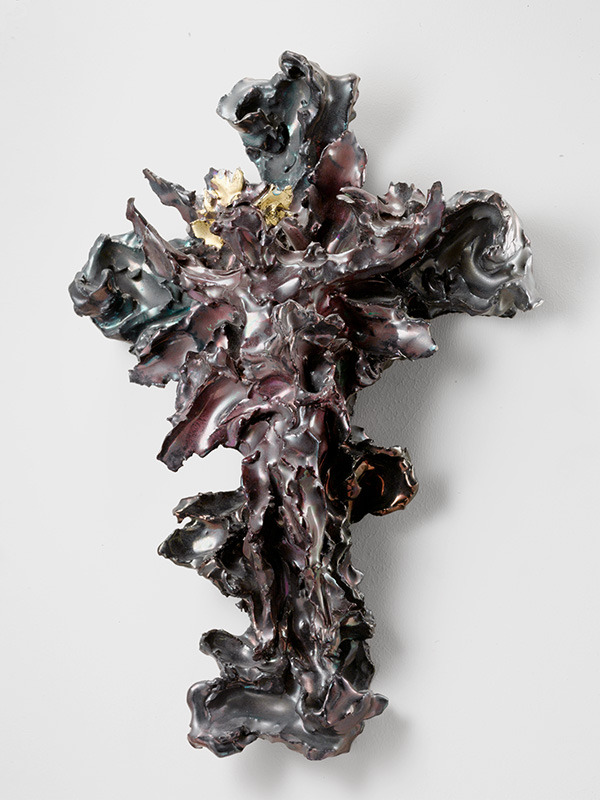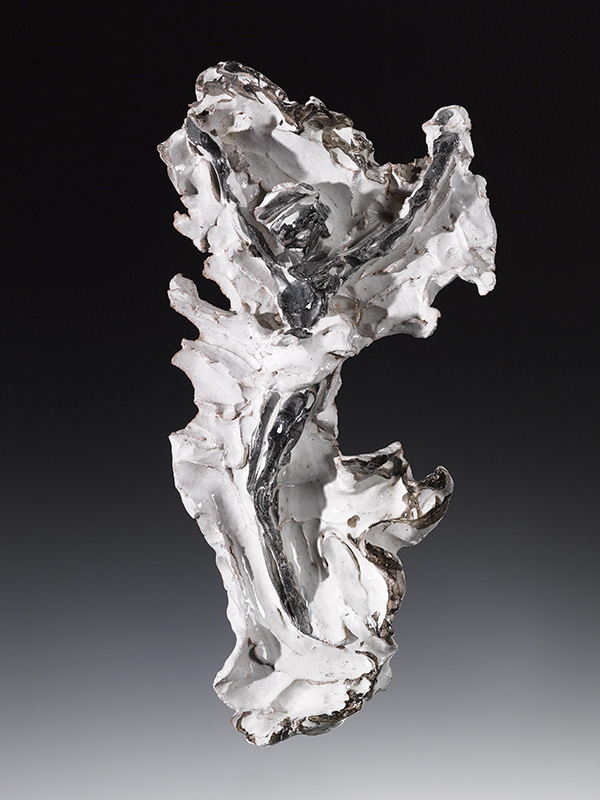ART CITIES:Cologne-Lucio Fontanta
 One of the most innovative artists of the 20th Century, Lucio Fontana continually challenged the boundaries of art and the role of the artist, using a rich vocabulary of material, form, and action. Although best known for his “Concetti Spaziale”, the spatial environments and slashed canvases he created in the ‘50s and ‘60s, clay modeling and ceramics have always been central to his process.
One of the most innovative artists of the 20th Century, Lucio Fontana continually challenged the boundaries of art and the role of the artist, using a rich vocabulary of material, form, and action. Although best known for his “Concetti Spaziale”, the spatial environments and slashed canvases he created in the ‘50s and ‘60s, clay modeling and ceramics have always been central to his process.
By Efi Michalarou
Photo: Galerie Karsten Greve Archive
Ceramic works of Lucio Fontana are on presentation is the exhibition “Crosses” at Galerie Karsten Greve in Cologne. Ceramics appeared in the work of Lucio Fontana starting in the 1930s when he visited the Mazzotti factory in Albisola. Fontana produced a body of baroque ceramic work in which he engaged the problems of both painting and sculpture in innovative and productive new ways. While ostensibly figurative, with subject matter as varied as battle scenes and flowers, these expressive works gain a raw immediacy from Fontana’s vigorous hand modeling as the clay becomes a register of the artist’s process. This direct, forceful manipulation of the purity of the surface also prefigures the violence of the “Concetti Spaziale”. Fontana’s interest in the sacred carries his secular mind-set, one that he had upheld ever since his youth when he spent years training in his father’s studio in Rosario de Santa Fe (Argentina) sculpting funeral monuments. Fontana’s initial statement in “La mia ceramica” (1939) published in Tempo magazine: “I am a sculptor and not a ceramist”. He approaches technique as would a sculptor and not as a ceramist, and it is probably thanks to this state of mind, liberated from any restrictive ties to the material, that he manages to create pieces with such aesthetic freedom. Between 1947 and 1957 Lucio Fontana made three different “Via Crucis” which are held to be particularly important since they give great insights into the artist’s conceptual development. The first “Via Crucis” (1947), from a Private Collection in Parma, was made the year after the publishing of his “Primo Manifesto dello Spazialismo”, where he stated that “Matter, colour and sound in motion are the phenomena whose simultaneous development makes up the new art”. The second and the third “Via Crucis” were both part of charitable and socially useful projects that the artist shared with the architect Marco Zanuso. They were made between 1955 and 1957, when Fontana was feverishly experimenting, both in his sacred production and in his conceptual series of works: “Baroques”, “Holes”, “Stones”, “Plasters” then his celebrated “Slashes”. The Stations of the Cross by Lucio Fontana were originally created for the chapel of the all-girl boarding school “Le Carline” in Milan. Following a refurbishment of the institute in the 1980s, the artwork was acquired by San Fedele Church on the advice of father Eugenio Bruno and art critic Giorgio Mascherpa in 1986. The re-housing of this work in the Jesuits’ own church was the last chapter in the long collaboration between the artist – close friend of father Arcangelo Favaro, the founder of Centro Culturale San Fedele – and the Society of Jesus in Milan (see also the Guastalla Chapel, where Fontana’s large altarpiece in glazed and polished ceramic. The 14 Stations are: Jesus is condemned to death, Jesus is made to carry his cross, Jesus falls the first time, Jesus meets his mother, Simon of Cyrene helps Jesus carry the cross, Veronica wipes the face of Jesus, Jesus falls the second time, The women of Jerusalem weep over Jesus, Jesus falls the third time, Jesus is stripped of his garments, Jesus is nailed to the cross, Jesus dies on the cross, Jesus is taken down from the cross Jesus is laid in the tomb. The works exhibited in “Crosses” are Fontana‘s expression of a new space-consuming approach to art and at the same time exist within a tradition of iconography that includes crucifixions, the deposition from the cross, ascent into heaven and Madonna with child. They exude a captivating energy as Fontana’s spatial concept becomes accessible in a tantalisingly sensual way. Their surface lustre and iridescent colouration, the voluptuous crescendo of expanding shapes, incorporating the airy surroundings of the figurines – acts as an embodiment of the atmospheric “Ambienti spaziali”, in which the fast-paced and spontaneous manipulation of the clay is visibly inscribed into the works through cuts and gashes.
Info: Galerie Karsten Greve, Drususgasse 1-5, Cologne, Duration 8/9-28/10/17, Days & Hours: Tue-Fri 10:00-18:30, Sat 10:00-18:00, www.galerie-karsten-greve.com
